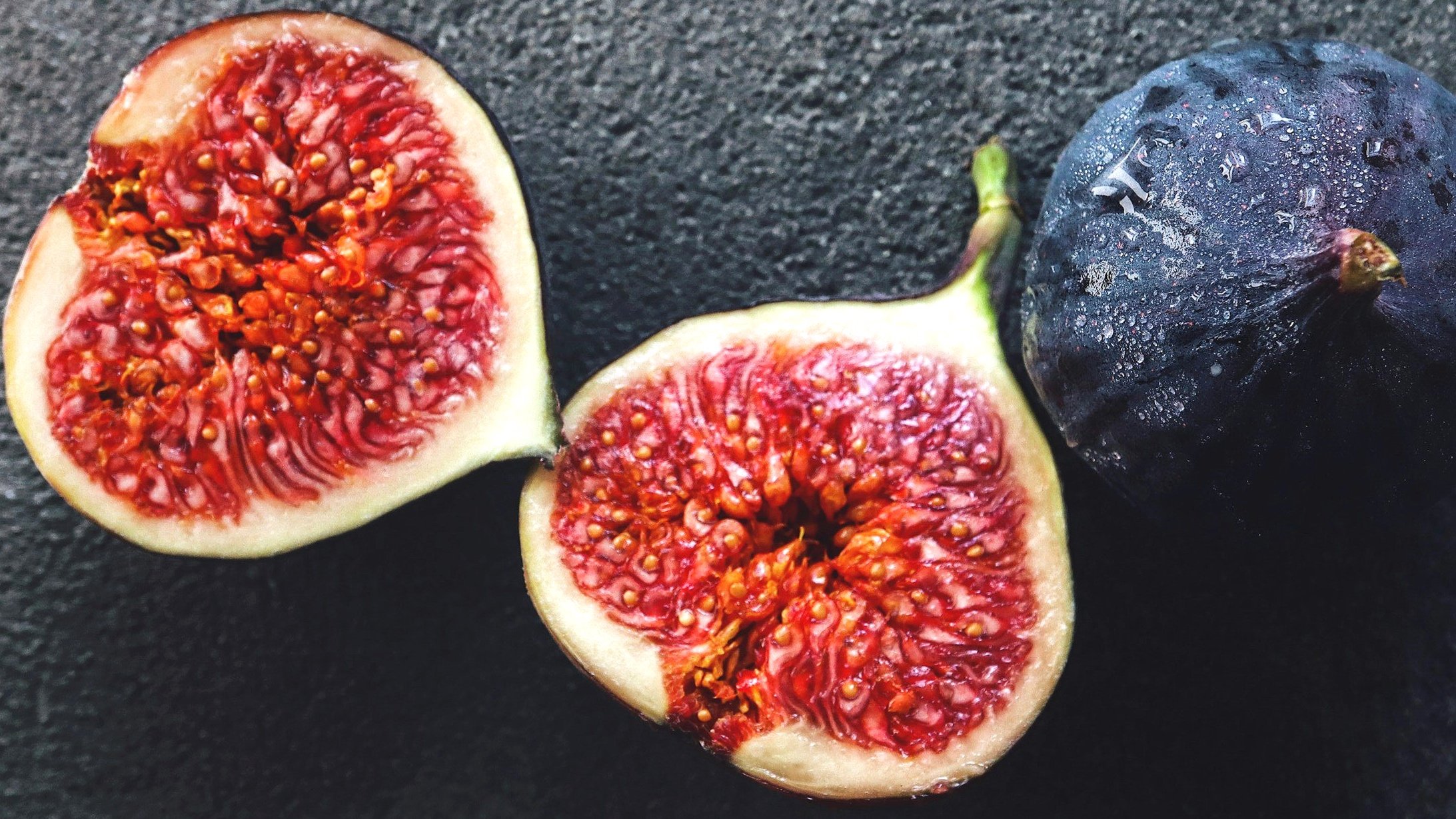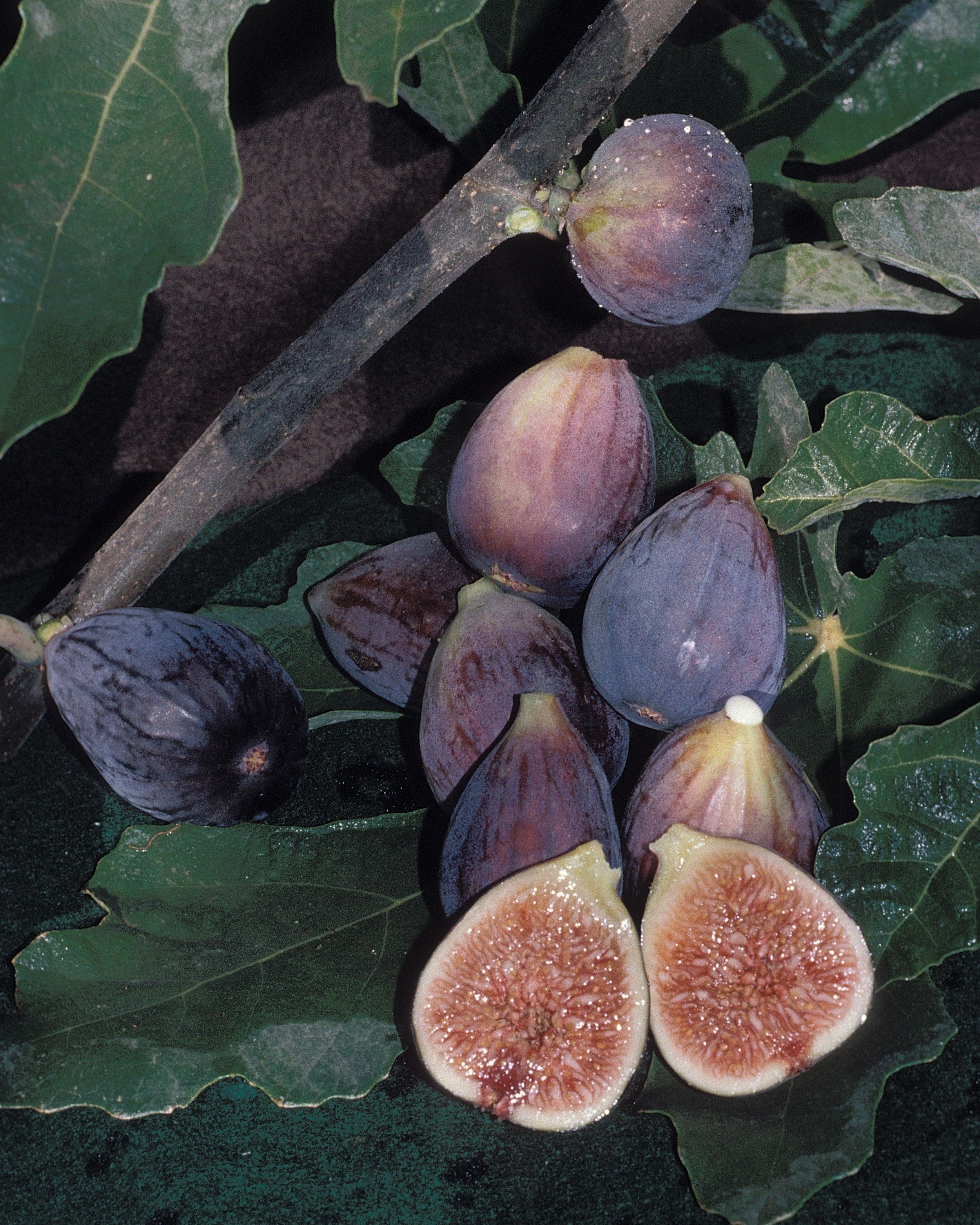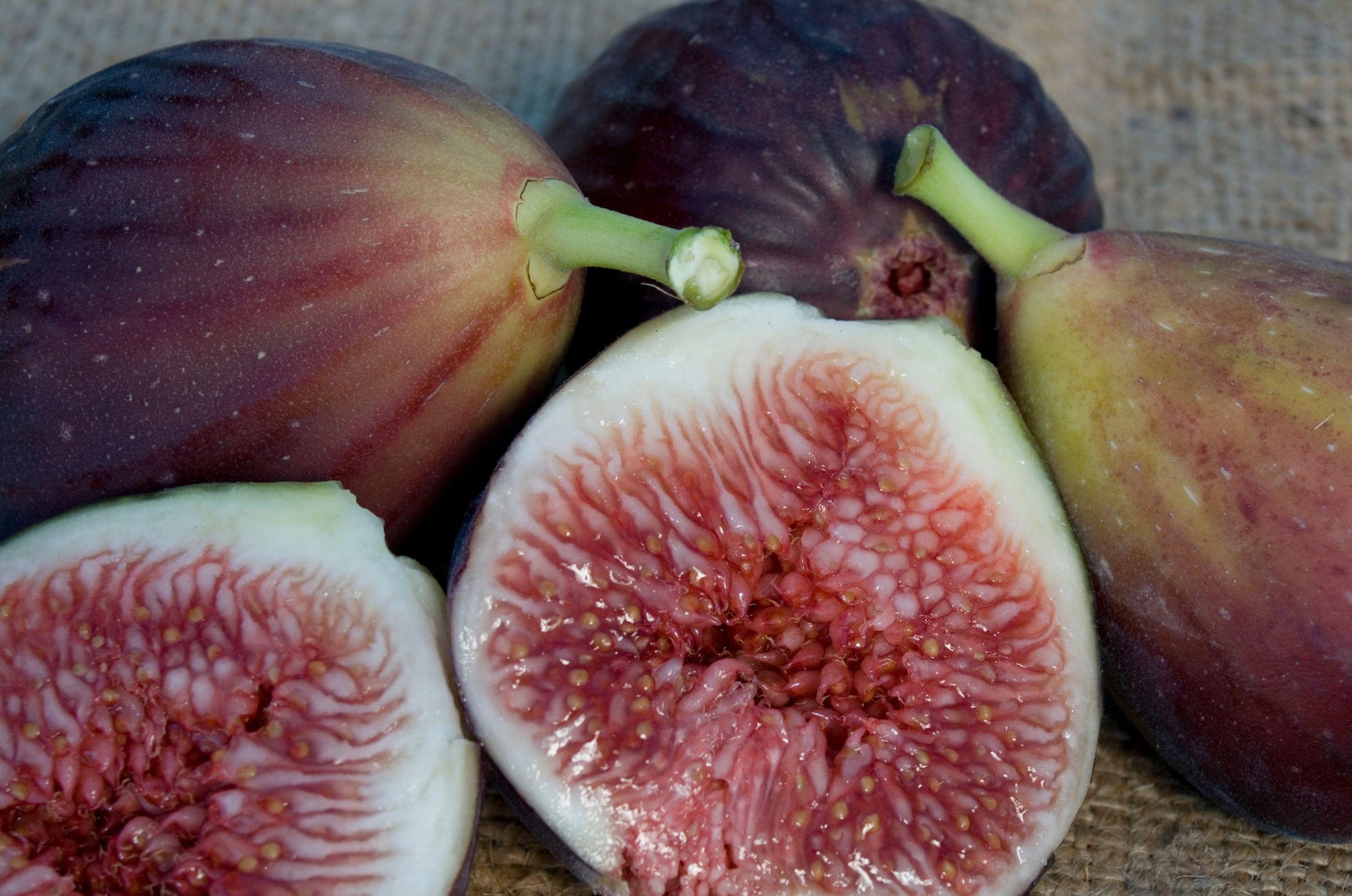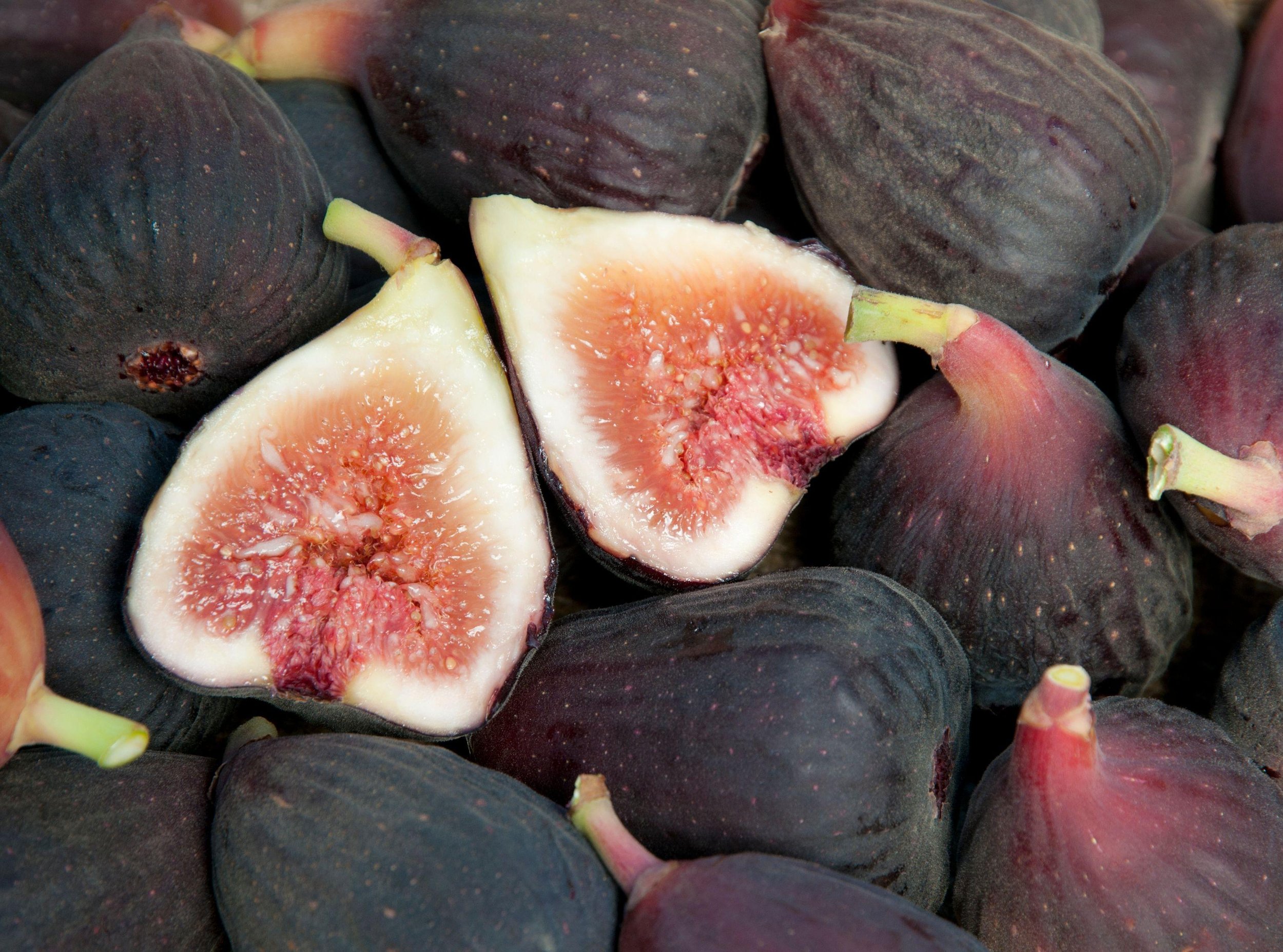
Our Fig Selections
If you plan to grow fruit trees in the Bay Area, you must consider site factors like sunlight, soil conditions, and your watering practices. Choosing the right variety, providing adequate sunlight, and proper pruning are all important for success and will reduce the potential for pest and disease problems.
-
Time to Fruiting:
Figs, especially small, young trees may take several years to produce fruit. Most of our selections in #5 containers or larger should fruit within. 2-3 years from planting.
Chill hours - Figs are either have very low chill hour requirements or are considered to not be chill hour dependent.
Cross pollination:
Nearly all figs are self-fertile.
Air Flow - Air movement, even the slightest breeze, is key to dry the leaves from the morning dew. Without it your fig will be prone to leaf fungal problems.
-
In the Bay Area, the best growing conditions for Figs involve full sun, well drained soils, and good airflow.
Specific Growing Conditions:
Sunlight: Fig trees need a minimum of eight hours of direct sunlight per day to fruit well.
Soil: Well-drained, sandy loam soil high in organic matter is preferred. Amending clay soil with organic matter can improve drainage. Avoid planting where winter rains may puddle.
Irrigation: Figs require some to little irrigation during dry periods of our year. Typically, a well-established tree may only need a slow deep watering every 14-21 days in the East Bay, best 14 days inland. A newly planted tree will need lighter more frequent watering.
Once established figs are one of the most drought tolerant fruiting trees.
Mulch: Mulching helps regulate soil temperature, retain moisture, and suppress weeds.
Fertilization: Supplemental fertilization is typically not needed unless the plant shows signs of deficiency. Use a well balance fruit tree fertilizer as needed.
Pruning: Pruning is often overlooked yet, when done properly, can help increase fruit production and improve air flow through the tree which decreases the incidents of disease and pest outbreaks.
-
Figs typically are free of any major pest or disease issues.
Most Common Pests
Fruit Flies:
Ripe or over ripe fruit will attract fruit flies. more than most fruit due to their thin, soft skins.Birds:
The sweet ripe fruit is very attractive to birds.
Controls
Fruit Flies are best controlled by harvesting the fruit just as they ripen. Avoid letting the fruit over-ripen on the tree.
Birds are best controlled by creating a physical barrier to prevent them from accessing the fruit. This is best done with light “bird” netting that can be dropped over the tree. Once your tree becomes large enough, the trees will produce enough fruit to share with the birds.
Most Common Diseases:
Powdery Mildew
This is the most prevalent disease we contend with in the Bay Area. It is a fungal disease that causes a white powdery growth on leaves and young twigs, eventually leading to leaf and twig death if left untreated.
Controls
Powdery Mildew can be controlled during the growing season by applying Fertilome’s ‘Fungicide 5’, a biofungicide that is approved for organic gardening. Powdery Mildew can be controlled with Fertilome’s Spinosad Soap, a bio-insecticide that will also control some of the fruit flies.
Apply Spinosad Soap in the evening after bees have stopped foraging to prevent harm. This product is considered bee safe 3 hours after application.
~ THIS LIST MAY NOT ACCURATELY REPRESENT OUR CURRENT STOCK ~
Thank you Dave Wilson Nursery for the use of your images and descriptions.






Large, purplish-brown figs with sweet, juicy, strawberry-red flesh. Harvest August to October in Central CA. Naturally small (semi-dwarf) tree. 100 hours. Self-fruitful. USDA Zones 7-10.